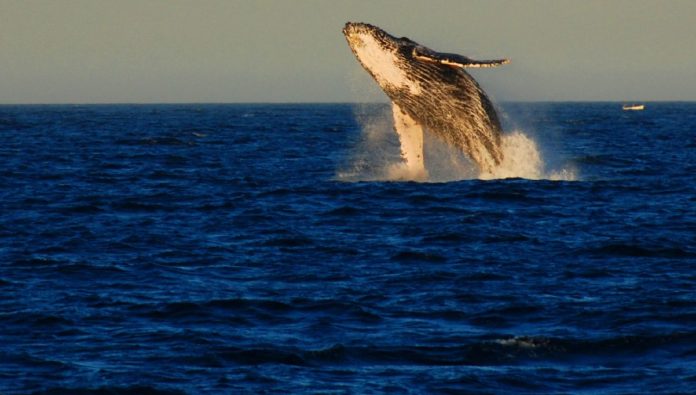42.6 million years ago, whales walked on land and swam in the sea: Scientists unearthed an unusual fossil of the amphibious whale along the Coast of Peru
Joining the recent unearthing of valuable fossils such as the Qingjiang biota, the amphibious whale discovered has been a source of intrigue and awe for the team involved.
A global team of paleontologists discovered the fossil in 2011 at Playa Media Luna, 1km inland from Peru’s Pacific coast.
The creature would have been 11 feet long. It had a long tail, webbed toes, hooves and a more streamlined form to swim in the sea and walk the land, 42.6 million years ago. It would appear to us now like a cross between a modern crocodile and a seal.
Researchers named it after the achievement of its species – being the first whale to reach the Pacific ocean.
Peregocetus Pacificus literally translates as “the travelling whale that reached the Pacific.”
This well-preserved fossil casts new perspectives on animal migration during the Eocene Epoch, which was 47.8 million to 38 million years ago.
Dr Olivier Lambert, a scientist at the Royal Belgian Institute of Natural Sciences and co-author of the study, said:
“This is the most complete specimen ever found for a four-legged whale outside of India and Pakistan.
“Other examples from this time were more fragmentary, less complete specimens.
“We didn’t have a clear indication about their swimming and walking abilities.”
The exact time range this preserved whale originates from is known as the Middle Eocene Epoch, made up of two distinct moments: the Bartonian and Lutetian. It was then that the first bats came into existence. Horses, rhinos, deer, dolphins, and sheep also began to exist, whilst archaic primates were usurped by rodents which made more efficient use of the available habitats.
During this time, whales walked on land, not ready to live entirely in the ocean.
This tells us that the ancestors of whales possibly settled in South America before they ended up in North America.
Researchers propose that the four-legged creatures used surface currents to go through the Atlantic Ocean from the Western coast of Africa. Once settled in Pacific waters, these ancient creatures would eventually make the migration to North America.
Here is how people are reacting to this:
Ok, this is awesome. https://t.co/TUlRLkEckJ
— David Gray (@Graydio1) April 5, 2019
This is so beautiful and truly spine tingling. The sublime poetry of our planet’s evolving life forms. We are discovering more every day. But we are destroying it. https://t.co/gTNlxfIixg
— Nicky Campbell (@NickyAACampbell) April 5, 2019
The article has been published in Current Biology, by paleontologist Mario Urbina and his team, who unearthed the fossils in 2011.











